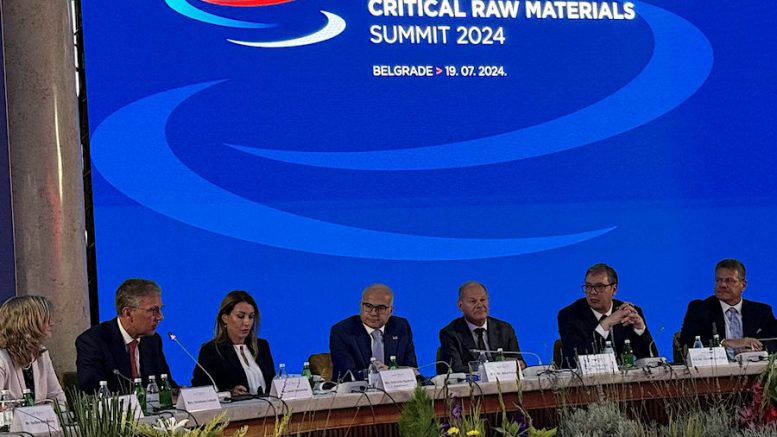Rio Tinto (NYSE: RIO; LSE: RIO; ASX: RIO) is boosting efforts to win public support for its US$2.4-billion Jadar lithium project in Serbia, which has been halted since 2022 because of fear that development could harm the environment.
The world’s second largest miner has been pushing since then to resume work on the project, expected to be Europe’s biggest mine of the battery metal. With forecast production of 58,000 tonnes of refined battery-grade lithium carbonate per year, Jadar could supply enough lithium to power 1 million electric vehicles and meet 90% of Europe’s current lithium needs.
Last month, Serbia reinstated Rio Tinto’s licence to develop Jadar. The miner will still need to secure approvals to build the mine. Those will hinge on its environmental impact study, Energy Minister Dubravka Djedovic Handanovic said last month.
Experts estimate it could take Rio Tinto two years to get the permits needed to start construction.
Chief executive officer Jakob Stausholm visited western Serbia in early September, joining President Aleksandar Vučić, to discuss the issue with locals in person.
Stausholm noted that Rio Tinto was “very good” at learning from mistakes and not repeating them.
“The topic of the project’s development confuses, disturbs, and divides people,” he wrote in an opinion column published by Politika newspaper, according to Beta news agency.

Rio’s boss also noted there was plenty of incorrect and misinterpreted information circulating about the project and the company, calling it “a carefully designed and well-organized campaign to spread misinformation.”
Vucic’s administration has touted the project as a boost to the economy. Finance Minister Sinisa Mali has said that lithium mining, if complemented by local production of batteries and electric vehicles, could add as much as €12 billion (US$13.4 billion) annually to Serbia’s economic output.
However, Chad Blewitt, Rio Tinto’s managing director for Serbia, acknowledged in an interview this week with the Financial Times that the company needs to allay concerns over environmental impacts and human health before people will be interested in hearing about the project’s economic benefits.
Jadar would propel Rio Tinto onto the world’s top 10 lithium producers podium. Its original estimated cost of US$2.4 billion has likely climbed above US$3 billion, accounting for inflation and currency movement, Barclays said in a recent research note.
Battery ambitions
Over the past six years, Rio has been expanding its footprint in the battery market. In 2018, it reportedly attempted to buy a US$5 billion stake in Chile’s SQM, the world’s second largest lithium producer.
In April 2021, the miner kicked off lithium production from waste rock at a demonstration plant located at a borates mine it controls in California.
Rio took another key step into the lithium market in 2022, completing the acquisition of the Rincon lithium project in Argentina, which has reserves of almost 2 million tonnes of contained lithium carbonate equivalent, sufficient for a 40-year mine life.
The company plans to develop a battery-grade lithium carbonate plant at Rincon with an annual capacity of 3,000 tonnes and has earmarked US$350 million to invest in the project.


Be the first to comment on "Rio Tinto battles ‘misinformation’ over Serbia lithium mine"